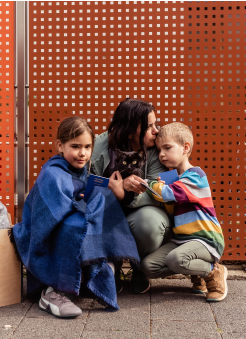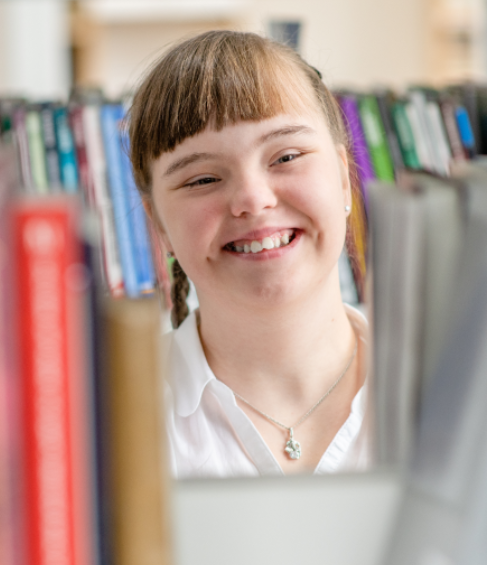
Our mission at The EdY Project, a non-profit organization, is to dismantle educational inequity by bridging the achievement gap and nurturing the limitless potential of every student in underfunded schools. We are committed to providing access to quality education, essential resources, and unwavering support that empowers students from diverse socio-economic backgrounds to flourish and achieve academic excellence.

Over 7.3 Million
Over 30 States
Children From Low-income
Private Funding

What We Do
Why Is the EdY project Important?
It all starts with the link between the low-income home and the lack of school readiness, which often interferes with education development and negatively follow students all the way through school.

- The child’s sensory motor development and physical well-being; this includes their physical health and growth.
- The child’s emotional and social development; this includes impulse control, cooperation, the ability to identify and communicate feelings and emotions, self-regulation, the ability to limit disruptive and aggressive behaviors, and the capacity to take turns.
- The child’s enthusiasm, temperament, values, curiosity, and culture surrounding the idea of learning.
- The child’s language development: this includes speaking, listening, literacy (story sense, drawing and writing processes, and print awareness, etc.), and vocabulary skills.
- The child’s cognition and general knowledge; this includes math and literacy skills.
Research has shown a direct link between poverty and the lack of readiness for school. These children are less likely to learn the skills necessary for school readiness due to several factors. Since many low-income families are single-parent homes with the parent working off-hours at one or two low-paying jobs, there may be less parental involvement. Some low-income children may have several care-providers or be shifted among homes. The parents may also not have as much support as other homes. There is also the higher chance for poor role modeling in low-income families.
Parents of lower-income communities are also more likely to have premature babies. Babies born prematurely have a lower chance of readiness and are at a higher risk for failure in school. Add this to their risk for failure due to their income-level, and that funding becomes even more vital!
Research shows that students from low-income families are five times more likely to be high school dropouts and 13 times less likely to graduate when they’re supposed to.
Due to underfunding, many classrooms lack even basic materials, such as pencils, books, paper, and basic technology that the students need, unless the teacher provides them herself. Students need these materials to do their work as much as a secretary or lawyer needs a computer, phone, and copy paper!
Those underserved students in under-resourced school districts typically do not get the necessary preparation for college during high school due to lack of funding. At this rate, we are failing our children and America since nearly two-thirds of all job openings require training or postsecondary education.
According to the president and CEO of the Education Policy Institute (EPI), Watson Scott Swail, EdD, students’ experiences while attending under-funded, under-resourced K-12 schools greatly affects their ability to apply for, acceptance into, and success in postsecondary education.
Lower-income children are not on a level playing field. In under-funded schools, the students are literally set up to fail.
The Statistics Don’t Lie



What Can Be Done?
We can prevent or reverse the effects of poverty on America’s students!
Early Intervention
Environmental Factors

Prevention and Intervention Programs
Parenting Mentorship, Guidance, or Support
Support/Services for Childhood Development


Continuing Intervention
Studies have demonstrated that when interventions like those above are implemented in middle school and high school, they still make a striking difference.
The Pathway to Education Project, a partnership between the community, schoolboard, and health center in Toronto, Ontario, saw dramatic results in their high schools over the last six years. Being funded by various sources, the program included:
- Student-parent support workers – they advocated for the students at school and connected the parents to the Pathway Project or the school.
- Contract between the parents, student, and project.
- Community volunteers who gave their time to tutor four nights a week.
- Financial support – this included scholarship money for postsecondary education and the public transit.
- Career and group mentoring in the community.

Do to Continuing Intervention
What Can I Do?
- Advocate for, volunteer at, and support schools striving to implement programs to achieve successful student outcomes.
- Advocate for, volunteer at, and support programs for intervention providing social, academic, and community support to help low-income students succeed.
- Make others aware of the costs of not implementing these programs and allowing these students to fail or drop out of school.
- Never pass up an opportunity to support the educational success of a child or youth.
- Advocate for families with children on the autism spectrum.
- Volunteer for to be parent support for families with children on the spectrum.
- Advocate and support system changes in the schools that will maximize educational success.
- Advocate for quality care and early education that will minimize the difference in school readiness between children in low-income households and those in higher-income households before entering school.
- Volunteer to be a tutor or mentor for children from 1st – 12th grade.





Here’s Your Opportunity to Support a
Low-Income Child’s Education!
Giving of yourself to help others is a gift like no others – to those you are helping and to yourself. Donate your time to tutor, mentor, be an advocate, or to be a parent support for families with children on the spectrum today! You can make a difference in the life of a child.
Support by Volunteering
Fill out the form below for more information on volunteering with the EdY Project.




